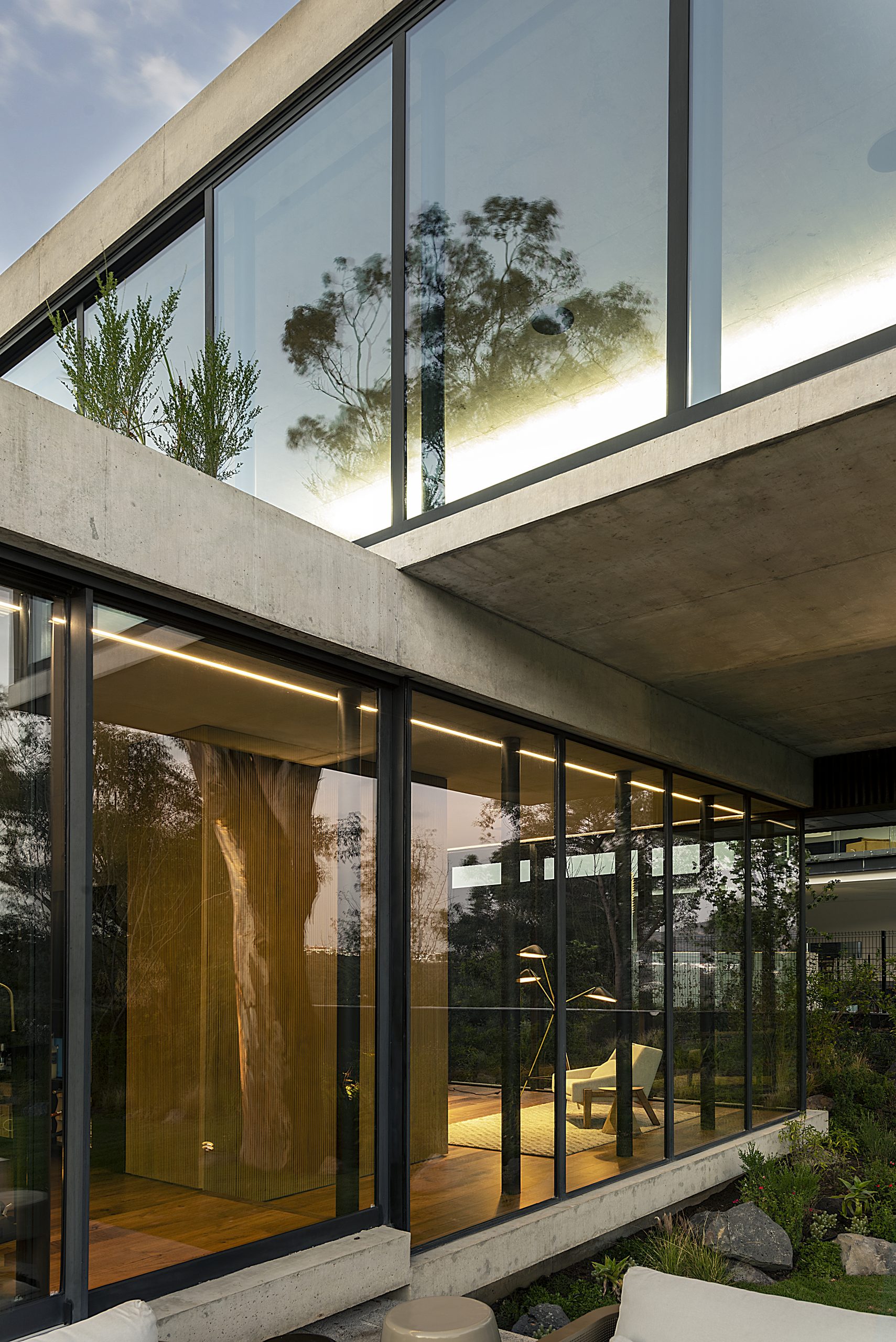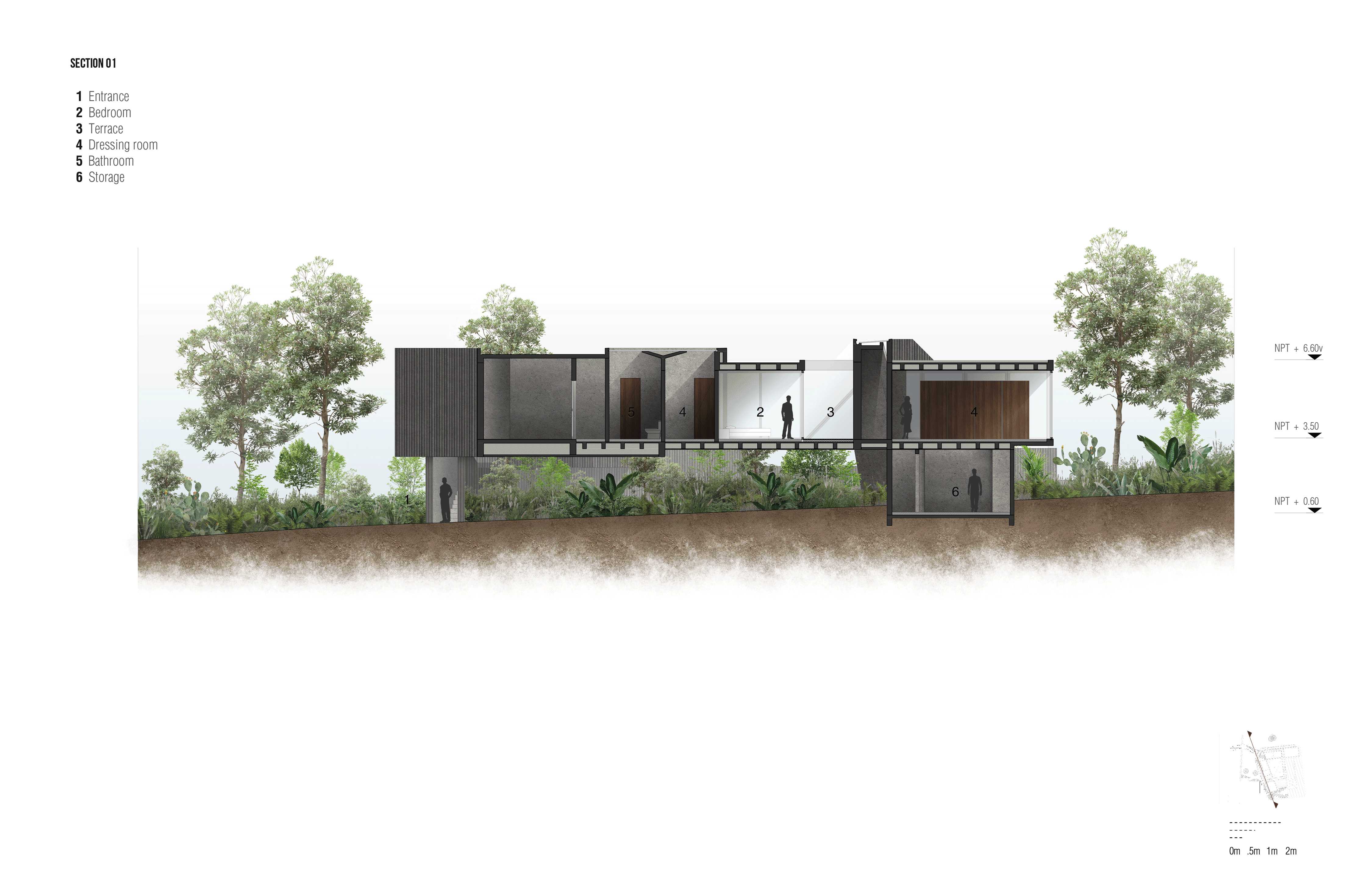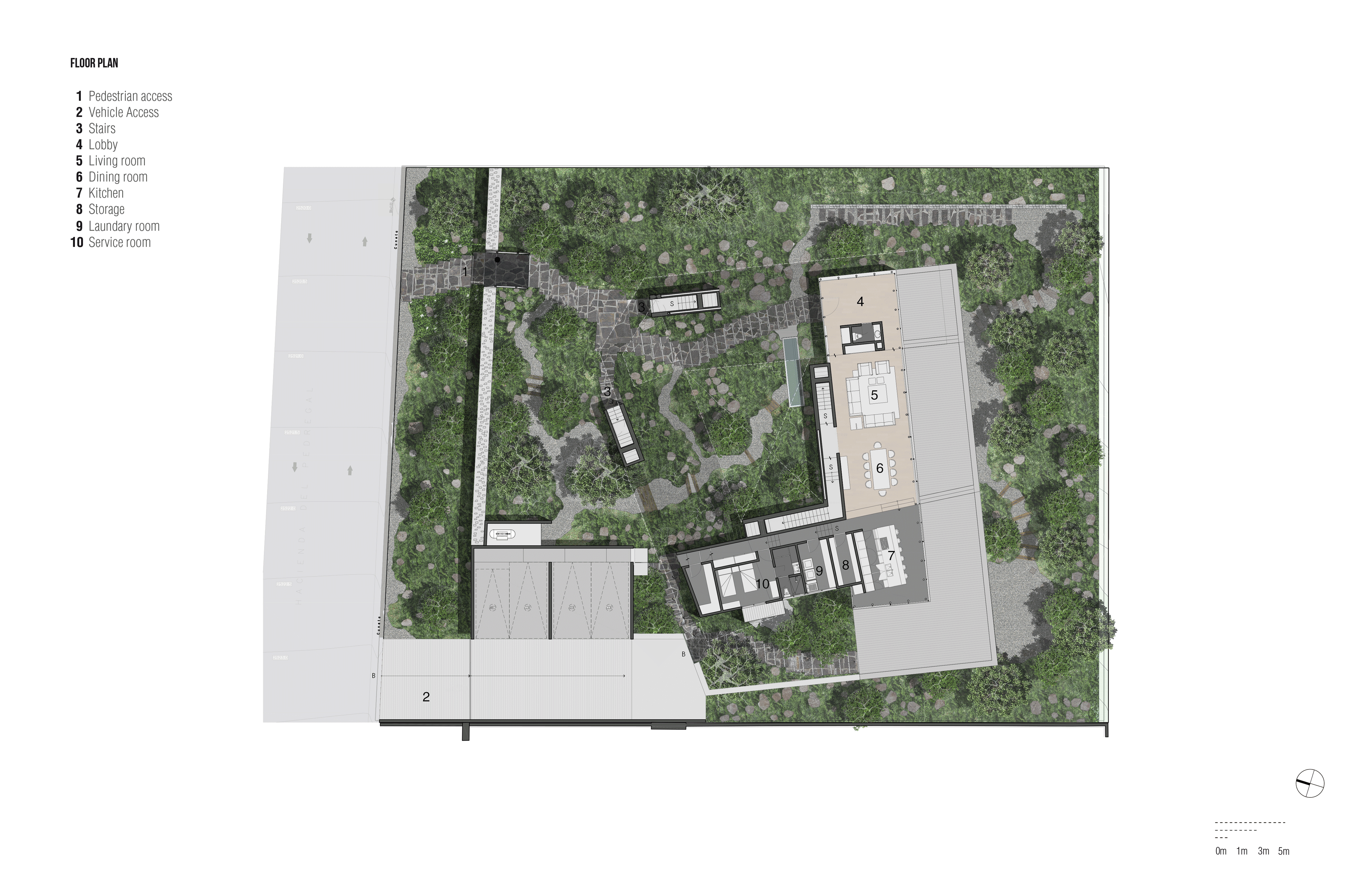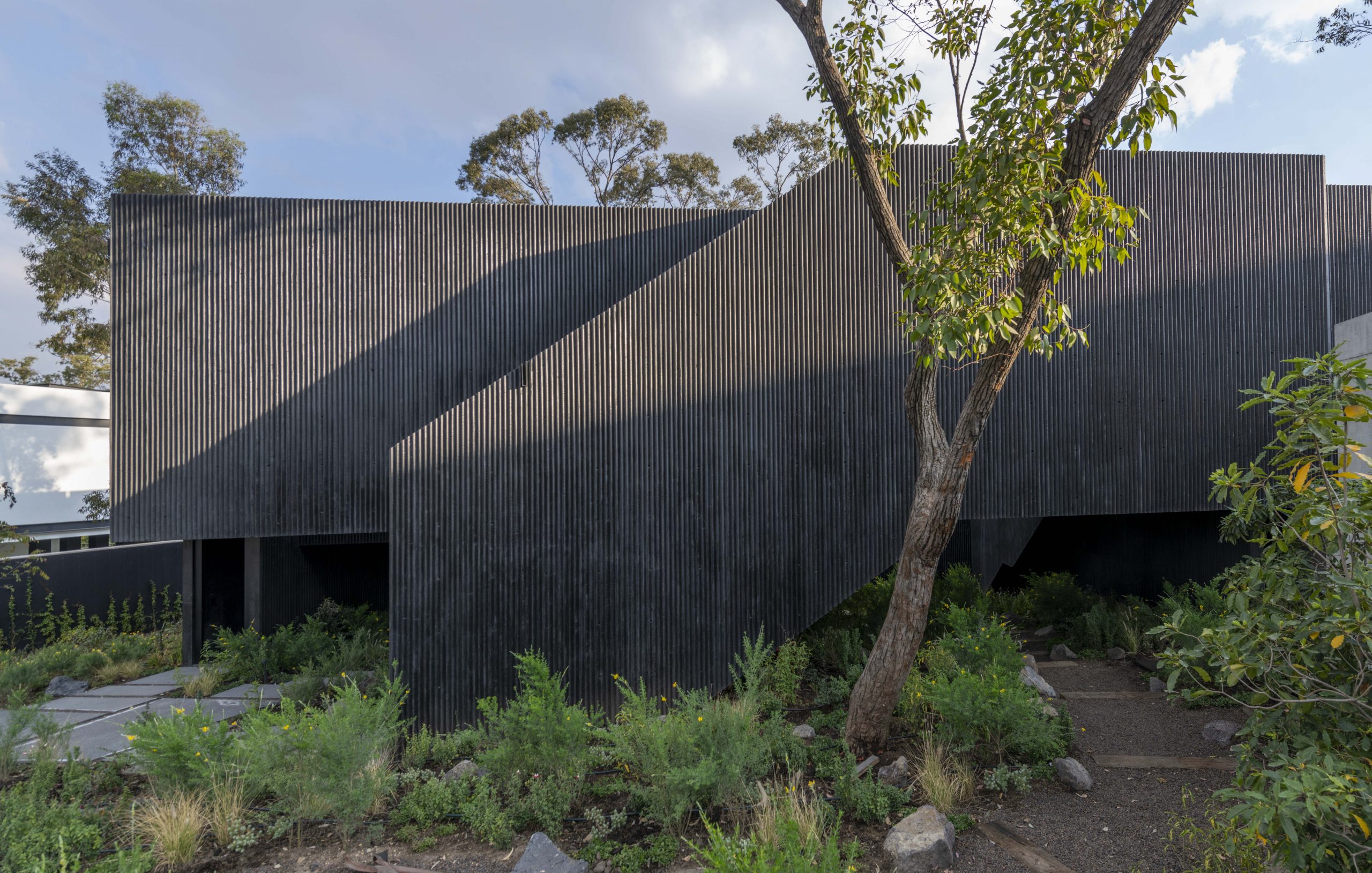
Photo by Jaime Navarro
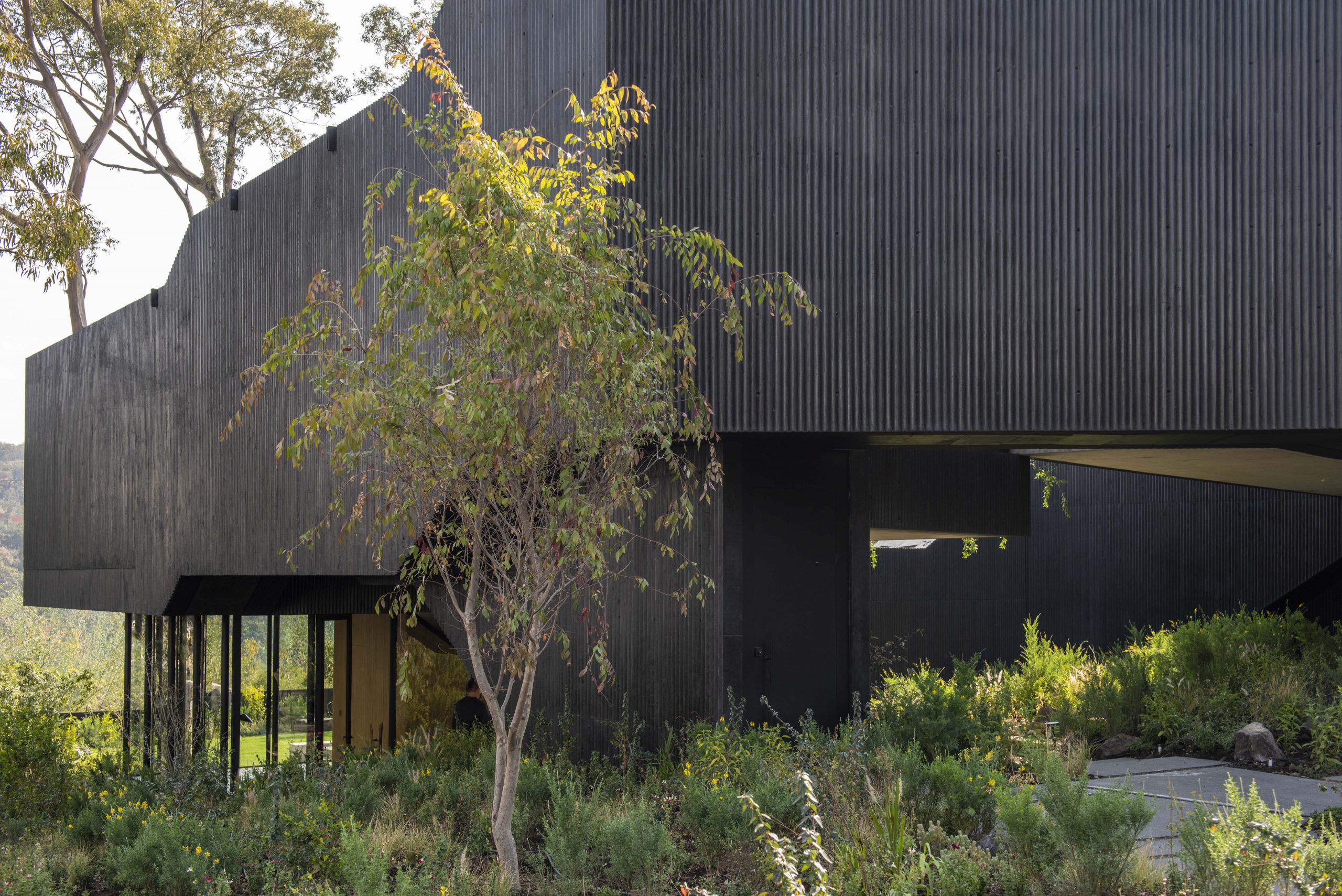
In the Pasiddhi House, a traditional architectural housing program becomes a meandering discovery. Everything happens within a circulation system contained in a solid concrete volume with multiple exits where its path is made in a semi-dark passage, illuminated mainly by overhead skylights during the day and very subtle downlights at night.
Rojkind Arquitectos
Michel Rojkind
Ruth Díaz
Eli Ambris
Victor Cruz
Victor Martinez
Daniel Flores
Arie Willem
Adrian Kreslik
Edgar Aurioles
Gerardo Salinas
Adrían Aguilar
Andrea León
Agustin Pereyra
Roxana León
Inocente Colectivo
Paulina Goycoolea
Alfonso Paz
Renderings
Adrián Aguilar
Structural Engineer
Ing. Juan Felipe Heredia
MEP
Ing. Germán Muñoz
Landscape Consultant
PA-AR Taller, Paola López, Carlos Ríos
Custom Installations
NTX Jaime Freyria
Lighting Consultant
Luz en Arquitectura
Builder
ESPAI, Arq. Carlos Ortíz
Installations
MRG Intalaciones y Diseño
Interiors
Mutuo Estudio – Paola Ruiz De Chavéz, Geysell Capetillo
Kitchen
Piacere
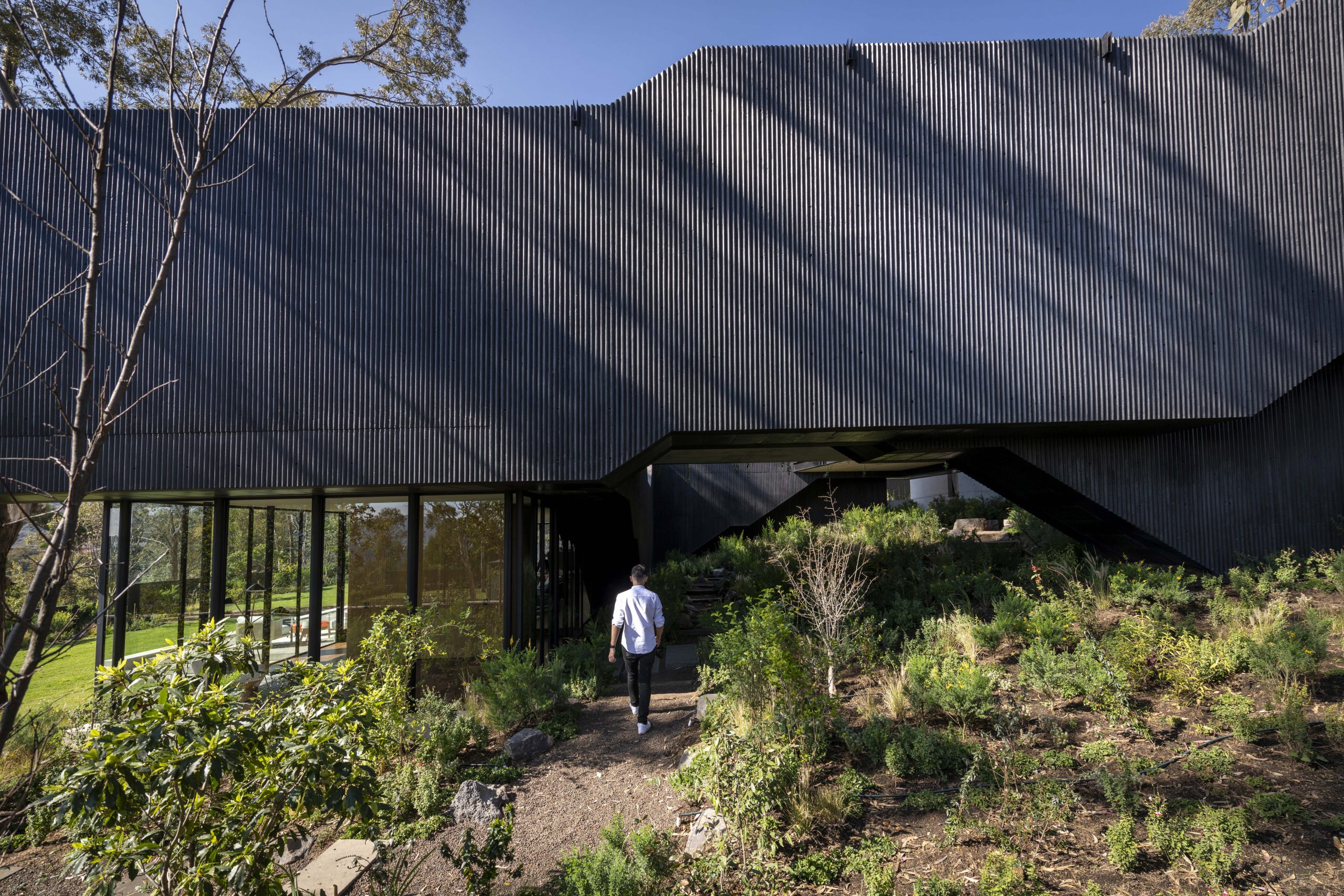
Located in “Hacienda de Valle Escondido”, State of Mexico, within a residential area characterized by modern country-style houses, Pasiddhi House is discovered as an introverted stone vestige, revealing only some features of its solid and brutalist volume.
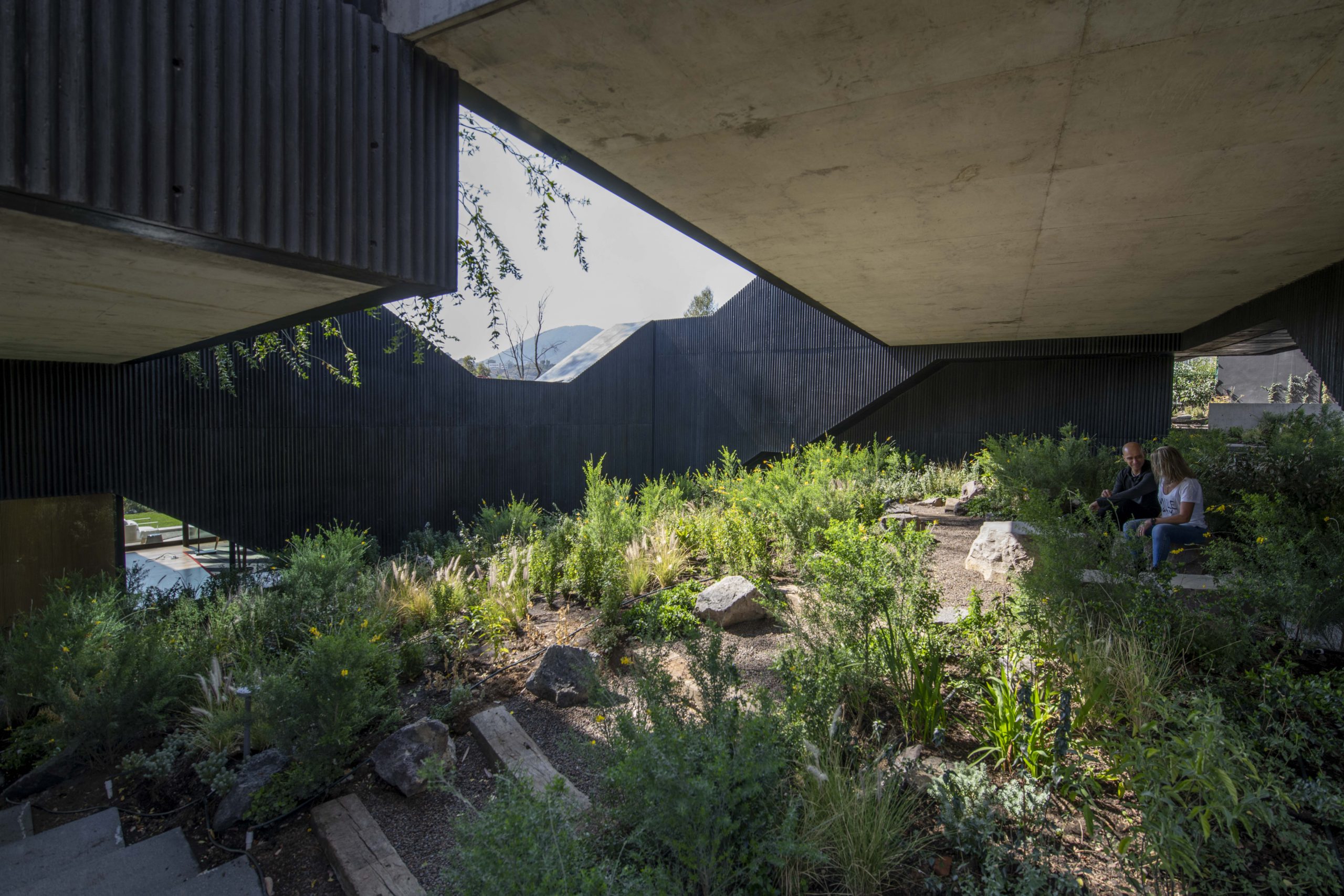
Going through a simple lattice of vertical elements of wood, which barely divide the street from the property, a fluted black concrete volume appears containing the horizontal and vertical connections making and abstract mobility diagram. The volume rises, freeing the garden and showing different areas of the house amongst the abundant and wild vegetation.
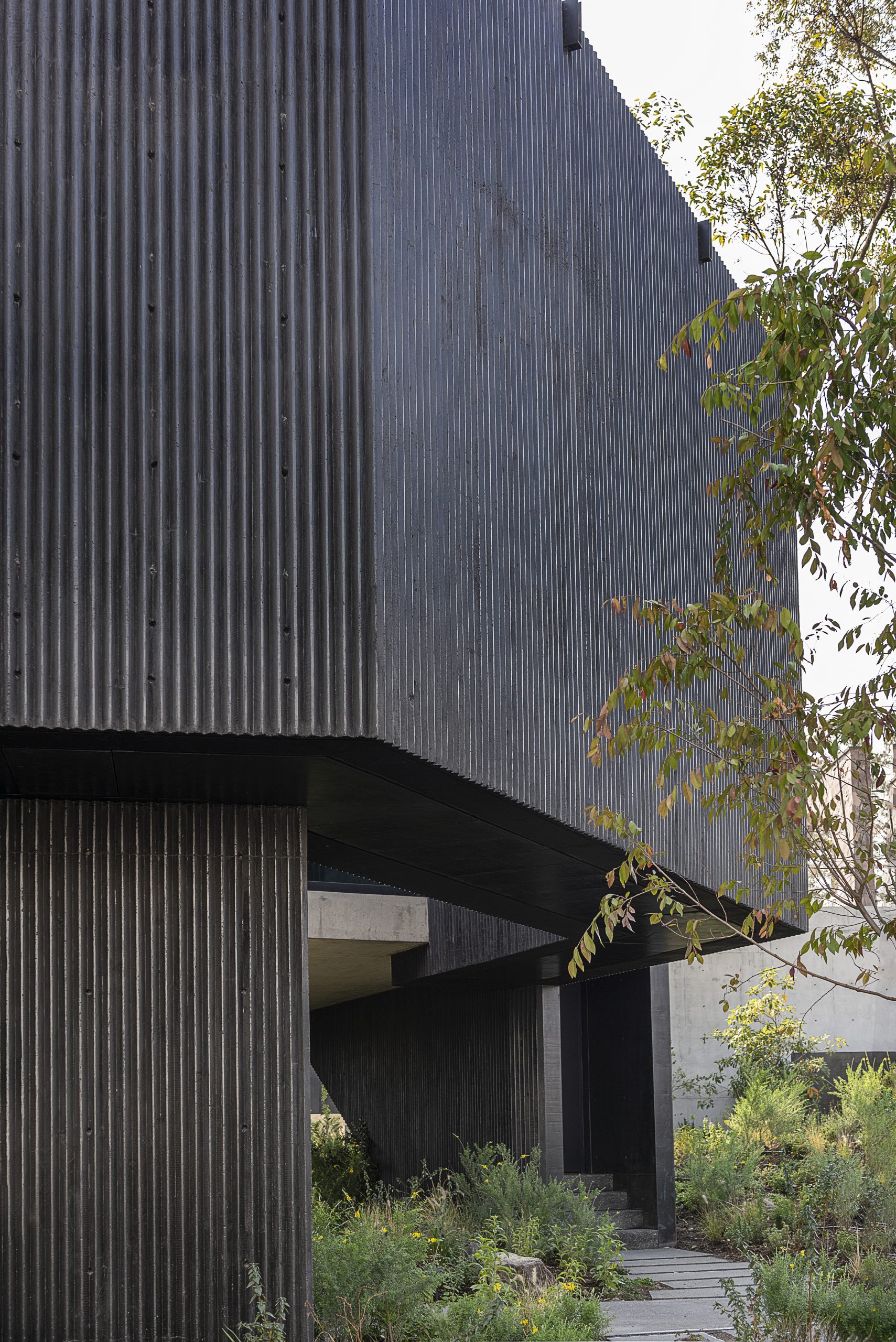
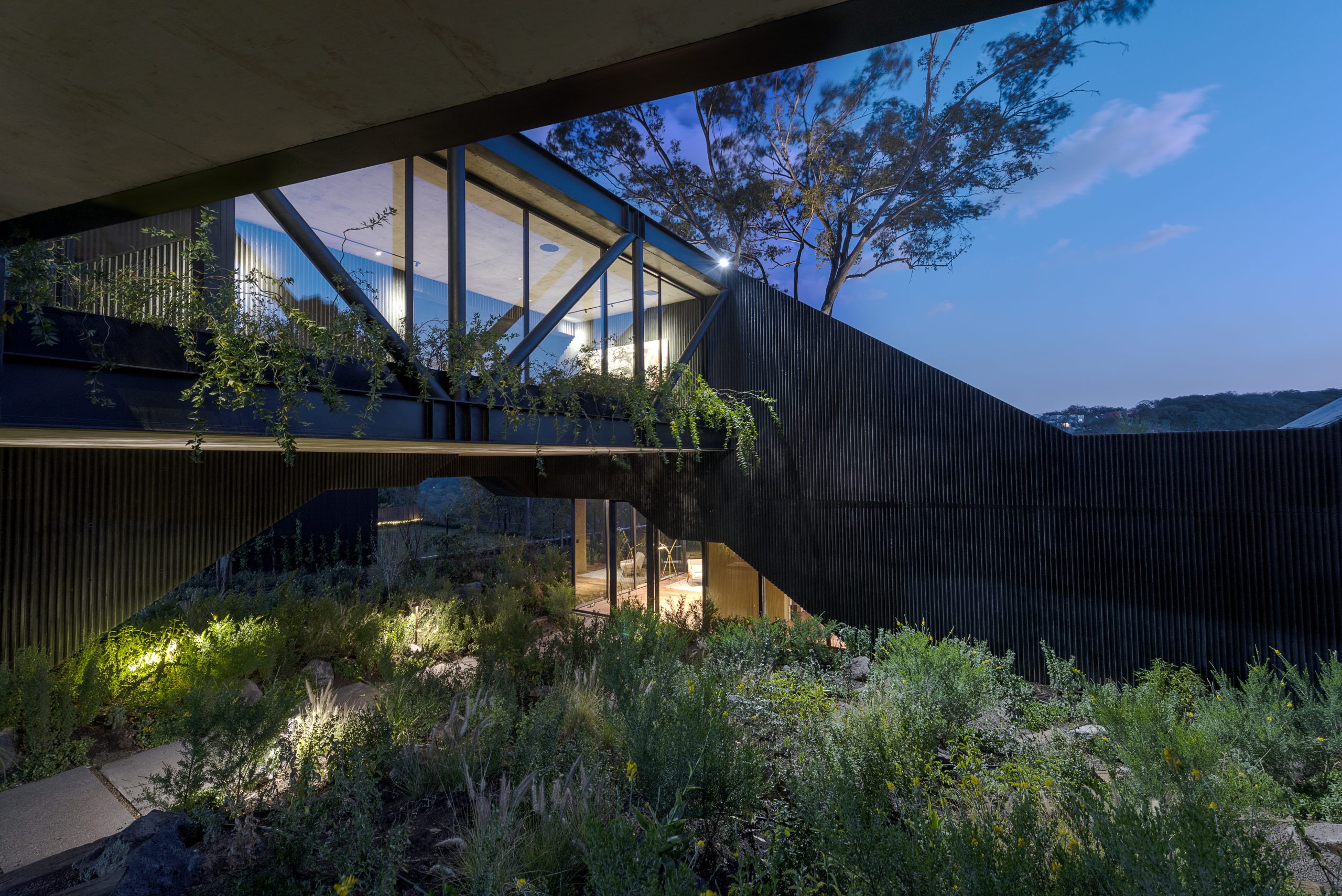
The snake-shaped element forms a contemplation patio garden in the center of the house over which the rooms and family gathering areas hover above overlooking the patio from where the lobby is accessed. While entering the house you discover the main garden in which all the views and social activities of the family are centered.
The container volume of the circulations functioning as a wall, protecting the spaces from the views of the neighbors. This element multiplies its function being circulation, giving privacy and defining views while giving the project a volumetric intention.
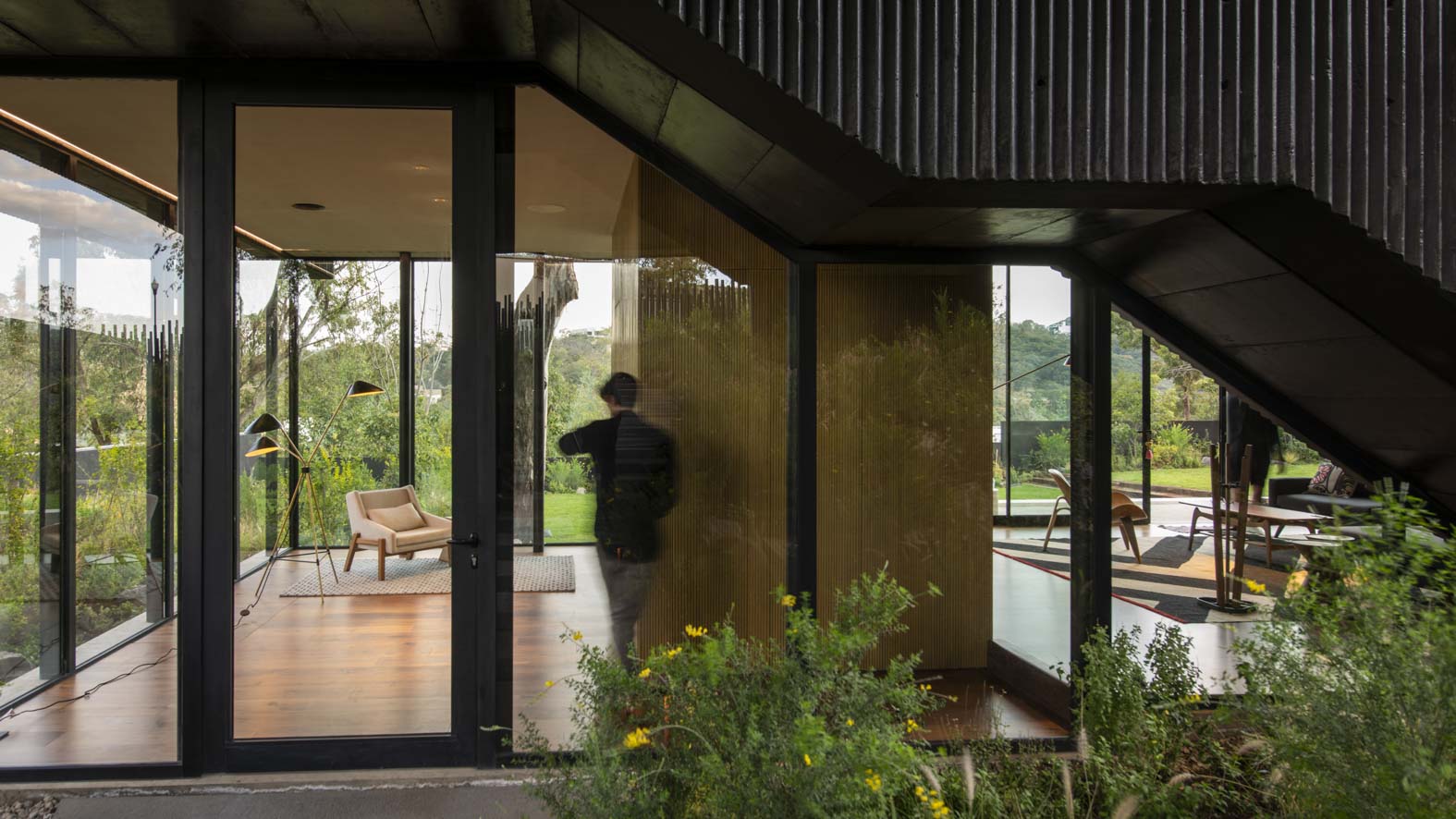
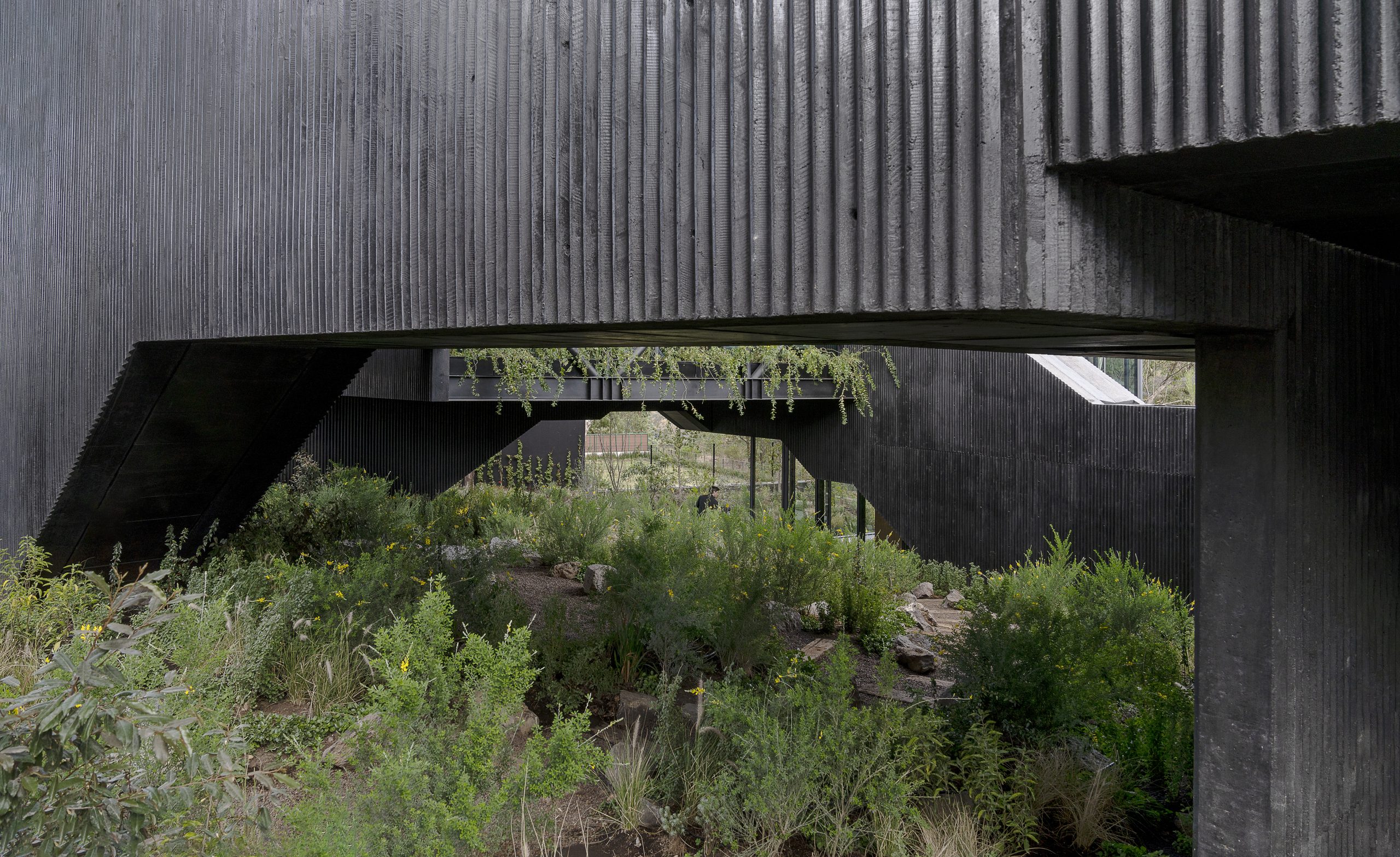
In the Pasiddhi House, a traditional architectural housing program becomes a meandering discovery. Everything happens within a circulation system contained in a solid concrete volume with multiple exits where its path is made in a semi-dark passage, illuminated mainly by overhead skylights during the day and very subtle downlights at night.
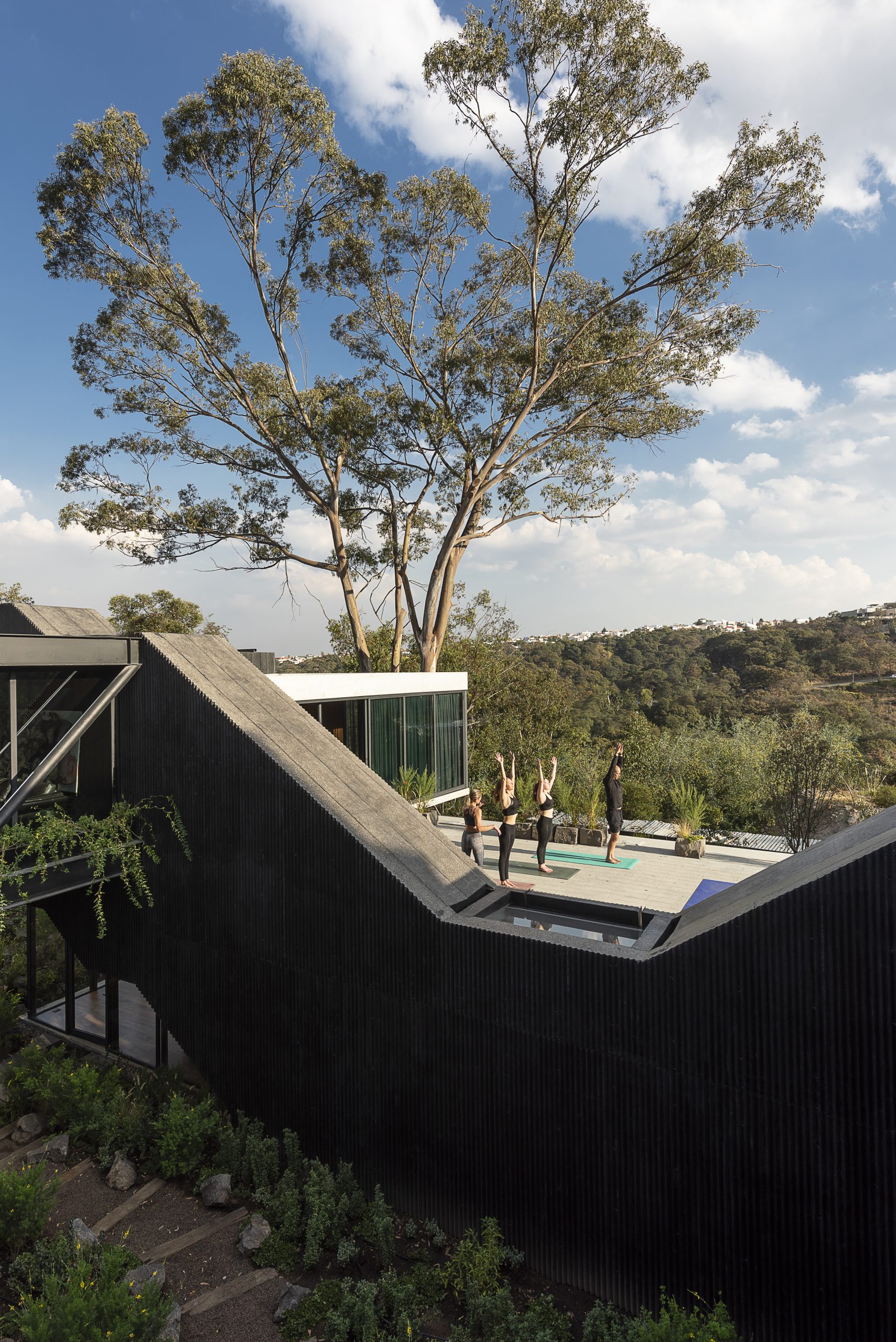
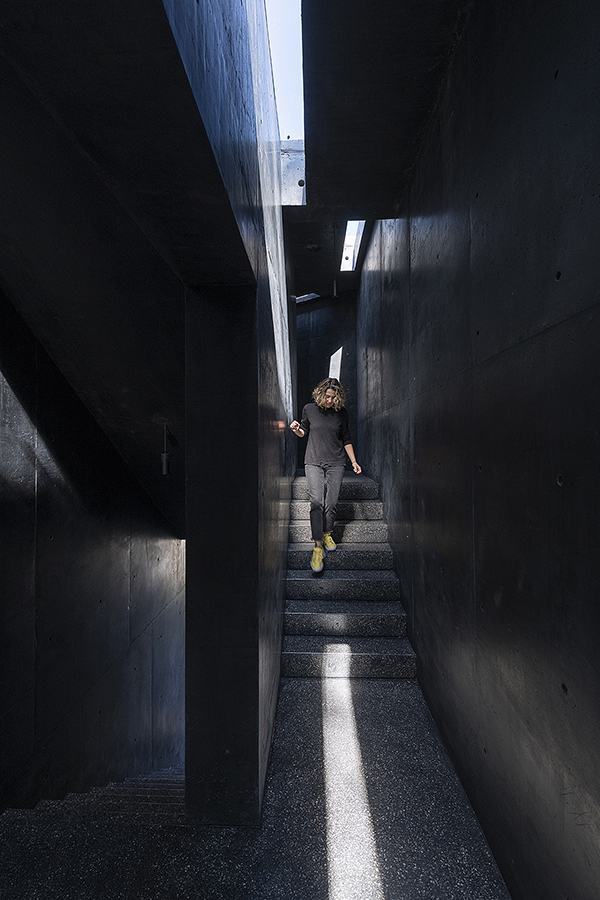
When accessing each room, the experience goes from semi-dark circulations to wide views with bright floor to ceiling glass spaces that accentuate the connection to nature. In the exterior areas quite the opposite happens; the spaces that are delimited, framed, or covered by the volume that rises and winds, create multiple experiences within a garden that invites you to visit it and discover the different areas of the house.
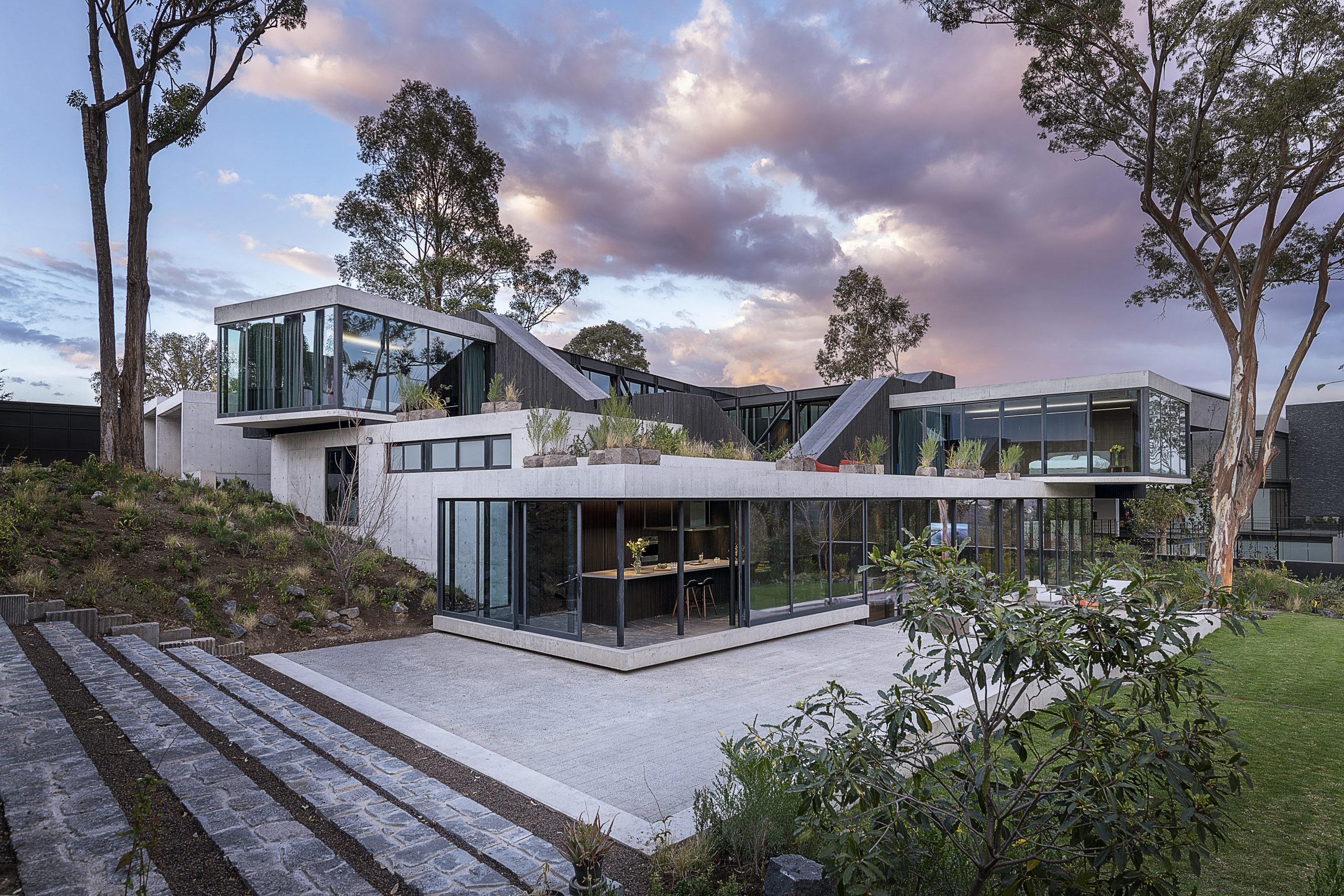
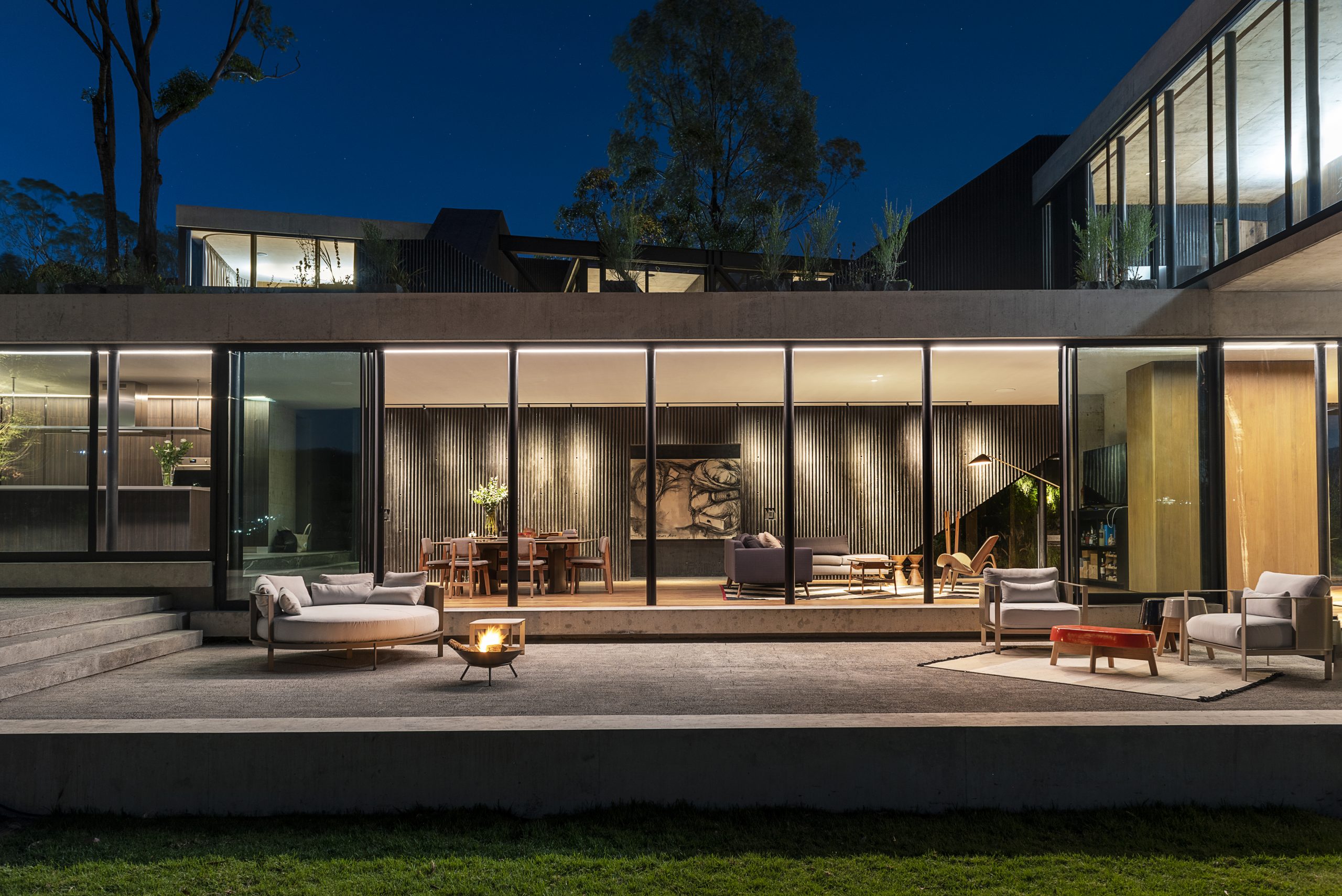
The project only uses three materials: Concrete, wood and glass. The concrete in presented in 2 colors and textures; gray concrete with a smooth finish for the walls of the service elements and gray concrete slabs, dark concrete with a zigzag finish to reinforce the hugging gesture of the project.
Photography by Jaime Navarro
